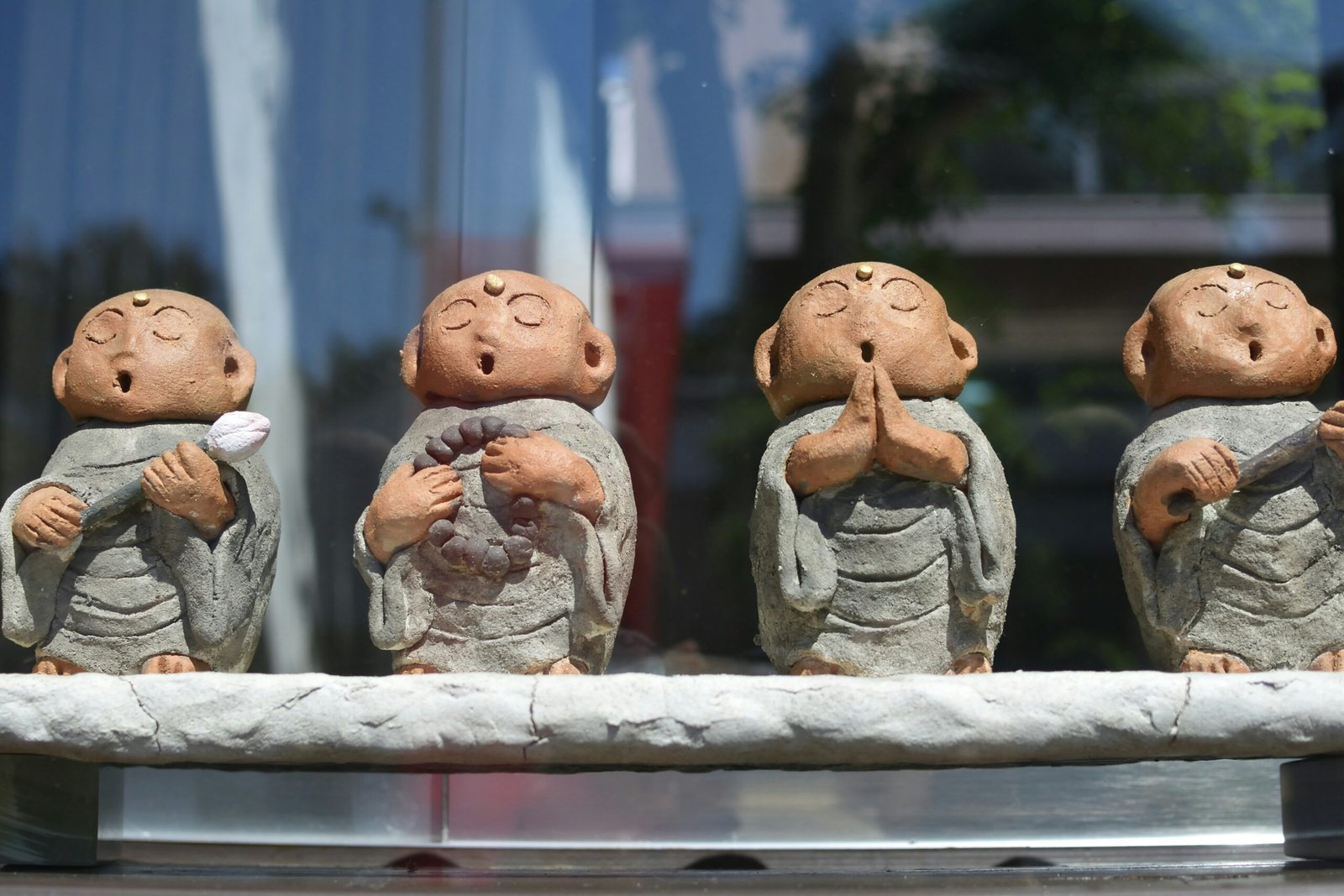Introduction to Chanting and Incantations
Chanting and incantations have been integral components of spiritual and magical practices across various cultures and historical periods. These vocal expressions, often rhythmic and repetitive, serve as powerful tools to invoke spiritual energy, cast spells, or seek protection. The historical significance of chanting and incantations can be traced back to ancient civilizations, where they were employed in religious rituals, healing ceremonies, and magical practices.
In many ancient cultures, such as those of the Egyptians, Greeks, and Hindus, chanting was used to communicate with deities and spirits. For instance, the ancient Egyptians believed that specific chants could appease the gods and ensure prosperity and protection. Similarly, in Hinduism, mantras—sacred sounds or phrases—are chanted to connect with divine forces and attain spiritual enlightenment. These practices highlight the universal belief in the power of the spoken word to influence the spiritual realm.
Cultural variations in chanting and incantations are vast, yet they share common purposes and structures. For example, Native American tribes use chants in their healing rituals and to honor their ancestors, while in African traditions, incantations are employed in ceremonies to invoke spirits and ensure communal well-being. In European folklore, incantations are often associated with witchcraft and spellcasting, where specific words and phrases are believed to wield magical power.
The common purposes for which chanting and incantations are used include invoking spirits, casting spells, and providing protection. These practices often involve a deep understanding of the symbolic meanings of words and their vibrational frequencies. By chanting specific sounds or phrases, practitioners can align themselves with the desired outcome, whether it is to attract positive energy, repel negative forces, or manifest particular intentions. Thus, chanting and incantations remain vital elements in the tapestry of spiritual and magical traditions worldwide, reflecting humanity’s enduring quest to connect with the unseen forces of the universe.
Historical Roots and Cultural Significance
Chanting and incantations hold a profound place in the annals of human history, tracing their origins back to some of the earliest civilizations. These practices have been integral to spiritual and societal frameworks, serving as powerful tools for communication with the divine and the supernatural. Ancient Egypt, for instance, is renowned for its elaborate incantations found in texts such as the “Book of the Dead,” which were believed to guide souls through the afterlife. The rhythmic recitation of these chants was considered essential for invoking deities and ensuring safe passage for the deceased.
Similarly, in ancient Greece, chanting played a pivotal role in religious rituals. The Orphic hymns, attributed to the legendary poet Orpheus, exemplify the Greeks’ use of melodic chanting to honor gods and seek their favor. These hymns were not merely religious recitations but were also believed to possess magical properties capable of influencing the natural world. The Greeks’ belief in the transformative power of sound is evident in their intricate ceremonies and mystery cults, where chanting was a central element.
In India, the Vedic traditions have long emphasized the significance of chanting as a spiritual practice. The Vedas, some of the oldest sacred texts, are replete with hymns and mantras that have been chanted for millennia. These mantras are considered to encapsulate the essence of the cosmos, and their precise intonation is believed to yield spiritual enlightenment and material benefits. The practice of Vedic chanting continues to thrive in contemporary times, reflecting its enduring cultural and spiritual importance.
Across different cultures, unique forms of chanting have evolved, each with its own distinct characteristics and purposes. Tibetan Buddhist chants, for example, are known for their deep, resonant tones used in meditative practices, aiming to align the mind with higher states of consciousness. In contrast, Native American chants often involve a blend of song and rhythmic drumming, aimed at connecting with nature and ancestral spirits.
These historical roots underscore the cultural significance of chanting and incantations across civilizations. They highlight how these practices have shaped spiritual beliefs, societal norms, and cultural heritage, leaving an indelible mark on the collective human psyche.
The Science Behind Chanting
Chanting, a practice embedded in various spiritual traditions, has garnered significant attention from the scientific community due to its observable physiological and psychological benefits. Research has shown that chanting can influence brain waves, reduce stress, enhance concentration, and promote a sense of well-being.
One of the key physiological effects of chanting is its ability to alter brain wave patterns. Studies utilizing electroencephalography (EEG) have demonstrated that chanting can induce a state of relaxation characterized by an increase in alpha brain waves, which are associated with a calm, alert mind. This state is often linked to meditation and can enhance cognitive functions such as memory and learning.
Moreover, chanting has been found to significantly reduce stress levels. The rhythmic nature of chanting activates the parasympathetic nervous system, which is responsible for the body’s ‘rest and digest’ functions. This activation leads to a reduction in cortisol levels, the hormone primarily associated with stress. In a study conducted by Dr. Herbert Benson at Harvard Medical School, participants who engaged in repetitive chanting experienced lower blood pressure and heart rates, contributing to an overall sense of calm and relaxation.
Chanting also plays a crucial role in enhancing concentration. The repetitive and rhythmic patterns of chanting can create a meditative state that allows individuals to focus more intently on the present moment. This heightened concentration can lead to improved mental clarity and productivity. Research published in the journal ‘Cognitive Processing’ highlighted that individuals who participated in regular chanting exercises showed better performance in tasks requiring sustained attention and cognitive control.
Furthermore, the impact of sound vibrations and resonance on the human body and mind cannot be overlooked. Sound vibrations produced during chanting resonate within the body, creating a harmonious internal environment. This resonance can stimulate the vagus nerve, which connects the brain to various vital organs, promoting a sense of well-being and emotional balance. According to a study published in ‘The Journal of Alternative and Complementary Medicine,’ sound vibrations from chanting can lead to increased production of endorphins, the body’s natural ‘feel-good’ hormones.
In essence, the science behind chanting provides a compelling explanation for its widespread use in various cultures and spiritual practices. By understanding the physiological and psychological mechanisms at play, one can appreciate the profound impact that chanting can have on overall health and well-being.
Chants and incantations have been integral components of spiritual and ritualistic practices across various cultures and traditions. The power of chanting and incantations lies in their ability to focus the mind, invoke spiritual energies, and manifest desired outcomes. Among the myriad forms, four primary types stand out: mantras, prayers, affirmations, and spells.
Mantras
Mantras are sacred sounds, words, or phrases repeated during meditation or ritualistic practices to harness spiritual energy and achieve a heightened state of consciousness. Originating from ancient Hindu and Buddhist traditions, mantras are often recited in Sanskrit. A notable example is the “Om Mani Padme Hum,” a Tibetan Buddhist mantra that invokes the compassionate blessings of Avalokiteshvara. Mantras are believed to purify the mind, aid in concentration, and align the practitioner’s energy with universal forces.
Prayers
Prayers are expressions of devotion, supplication, or thanksgiving directed towards deities, spirits, or higher powers. They are a central aspect of many religious traditions, including Christianity, Islam, and Judaism. For instance, the Christian “Lord’s Prayer” is a well-known invocation seeking divine guidance and forgiveness. Prayers can be spoken aloud, whispered, or silently contemplated, serving to strengthen one’s faith, seek protection, and offer gratitude.
Affirmations
Affirmations are positive statements or declarations designed to influence the subconscious mind and bring about personal transformation. They are commonly used in self-help and new age practices to cultivate a positive mindset and manifest specific life goals. An example of an affirmation might be, “I am confident and capable in all that I do.” By regularly repeating these statements, individuals aim to reprogram their thoughts and beliefs, thus fostering a more empowered and optimistic outlook.
Spells
Spells are ritualistic incantations employed in various magical traditions to produce a desired effect or change in circumstances. They often involve the recitation of specific words, along with symbolic actions or the use of magical tools. In Wiccan practices, a love spell might include chanting words of affection while lighting a pink candle. The purpose of spells is to channel the practitioner’s intent and energy towards achieving a particular goal, whether it be love, protection, or prosperity.
Each type of chant or incantation serves a unique purpose and reflects the cultural and spiritual contexts from which it originates. Whether through the meditative repetition of mantras, the heartfelt devotion of prayers, the empowering declarations of affirmations, or the intentional rituals of spells, these practices underscore the profound impact of spoken words in the realm of the mystical and the spiritual.
Creating effective chants and incantations involves a thoughtful and deliberate process, beginning with a clear understanding of your intention. The intention serves as the foundation of your chant or incantation, anchoring the energy and focus required to manifest your desired outcome. To start, clearly define what you seek to achieve, whether it be protection, healing, or attracting positivity.
Rhythm and repetition are pivotal components in crafting chants and incantations. The rhythm establishes a cadence that resonates with the natural flow of energy, making it easier for the mind to focus and the spirit to engage. Repetition reinforces the intention, embedding the words deeper into your subconscious and the universe. Aim for a steady, consistent rhythm that feels natural and comfortable for you to maintain.
Sound plays a crucial role in the effectiveness of chants and incantations. The vibrations produced by your voice can influence the energy around you, enhancing the potency of your spell. Experiment with different tones and volumes to find what works best for your particular intention. Chanting softly might be more appropriate for invoking peace, while a louder, more assertive tone could be better for banishing negative energy.
Choosing the right words is another essential aspect. Opt for words that resonate with you personally and align with your intention. Incorporate words that evoke strong imagery and emotions, as this will amplify the power of your chant. The significance of language and pronunciation cannot be overstated; even slight variations in pronunciation can alter the energy and effectiveness of your chant. If using words from a different language, ensure you understand their meanings and pronounce them correctly.
Tailoring chants for specific needs or goals requires customization and personalization. Consider the unique aspects of your situation and how best to address them through your chant. For example, if seeking healing, include words that symbolize health and wellness. If aiming to attract love, use words that evoke feelings of affection and connection. Personalizing your chant not only makes it more meaningful but also strengthens its efficacy.
Practical Applications in Modern Spiritual Practices
In contemporary spiritual and magical practices, chanting and incantations hold a prominent place, serving as powerful tools for meditation, healing, rituals, and personal development. These age-old practices have seamlessly integrated into modern spirituality, proving their timeless relevance and efficacy. Their roles have expanded and adapted to fit the diverse needs of today’s spiritual seekers.
Chanting, often characterized by the repetitive vocalization of specific sounds or words, is widely utilized in meditation. It acts as a focal point, aiding in the quieting of the mind and fostering a deep state of relaxation and mindfulness. Practitioners frequently incorporate mantras, such as “Om” or “Shanti,” to connect with higher states of consciousness, promoting inner peace and spiritual awakening. Similarly, incantations, which involve the deliberate articulation of phrases imbued with intent, are employed to manifest specific outcomes during meditative practices.
Healing rituals also benefit significantly from the use of chanting and incantations. Sound vibrations produced through chanting are believed to resonate with the body’s energy fields, facilitating the release of blockages and the restoration of balance. Incantations, when spoken with conviction and clarity, can serve as affirmations that reinforce the body’s natural healing processes. This dual approach is often seen in energy healing modalities such as Reiki, where practitioners may chant while channeling healing energy.
Rituals, whether solitary or communal, frequently incorporate chanting and incantations to create sacred space and invoke spiritual entities or energies. These practices can range from simple daily blessings to elaborate ceremonial rites. The repetition of sacred words or phrases during rituals helps to focus intent, raise vibrations, and align participants with their spiritual goals. Communities centered around Wicca, Paganism, and other nature-based spiritualities often emphasize these elements, emphasizing their role in connecting individuals to the divine and the natural world.
Personal development is another area where chanting and incantations prove invaluable. Affirmations and positive incantations can be used to reprogram the subconscious mind, fostering self-improvement and personal growth. Modern practitioners often integrate these techniques into their daily routines, using them to set intentions, overcome challenges, and cultivate a sense of empowerment and purpose.
In summary, chanting and incantations have found a vital place in modern spiritual practices, offering versatile and effective means for meditation, healing, rituals, and personal development. As more individuals and communities embrace these practices, their transformative potential continues to be realized, enriching the spiritual landscape of the contemporary world.
Case Studies and Personal Experiences
In exploring the application of chanting and incantations in various practices, numerous individuals have reported profound experiences and transformative outcomes. One notable example is the case of Maria, a practitioner who utilized chanting as part of her daily meditation routine. Maria reported that a specific incantation, aimed at fostering inner peace, significantly reduced her anxiety levels. Over a period of six months, she noted a marked improvement in her emotional stability and overall well-being. This illustrates the potential of chanting to influence mental health positively.
Another compelling example comes from David, a business professional who turned to incantations to enhance his focus and productivity. Facing a particularly challenging project, David incorporated daily chants designed to sharpen his concentration. According to his testimonial, the practice not only helped him complete the project ahead of schedule but also improved his overall cognitive function. This case highlights the versatility of incantations in addressing professional and personal challenges.
Furthermore, the story of Anne, a student who struggled with academic performance, showcases the educational benefits of these practices. Anne adopted a chant aimed at boosting memory retention and clarity of thought. Over a semester, Anne observed a significant improvement in her grades and a deeper understanding of her coursework. Her experience underscores the potential of chanting to support academic success.
These personal stories and case studies reflect the diverse applications and outcomes of chanting and incantations. Whether used for mental health, professional enhancement, or academic performance, these practices demonstrate a wide range of benefits. By integrating chanting into their daily routines, individuals have experienced tangible improvements in various aspects of their lives, showcasing the power and versatility of this ancient practice.
Conclusion: Embracing the Power of Words
Throughout this exploration of chanting and incantations in spells, we have delved into their profound significance in spiritual and magical practices. These ancient traditions have stood the test of time, underscoring the innate power of words and sound to influence our reality and spiritual experiences. Whether through rhythmic chanting or carefully crafted incantations, the vibrational energy produced can manifest intentions, foster deep connections, and transform the practitioner’s inner and outer worlds.
Chanting, with its repetitive nature, serves as a powerful tool for focusing the mind and elevating one’s consciousness. This meditative practice allows individuals to tap into a higher state of awareness, aligning their intentions with the universe’s energy. Similarly, incantations, often imbued with symbolic meanings and historical significance, act as verbal keys to unlock desired outcomes, whether for protection, healing, or manifestation.
The importance of these practices lies not only in their mystical properties but also in their ability to cultivate mindfulness and intentionality. By consciously choosing words and sounds, practitioners can create a sacred space for self-discovery, healing, and personal growth. This conscious engagement with language and sound fosters a deeper connection to the present moment, enhancing overall well-being and spiritual fulfillment.
We encourage readers to explore and experiment with chanting and incantations in their own lives. Whether you are a seasoned practitioner or a curious novice, integrating these practices can enrich your spiritual journey and amplify your manifesting abilities. Embrace the power of words and sound, and allow them to guide you towards a more intentional and spiritually attuned life.
In embracing these ancient practices, we acknowledge the enduring power of words and their profound impact on our reality. The vibrations we create with our voices can ripple through the cosmos, shaping our experiences and connecting us to the greater tapestry of existence. As we continue to honor and harness this power, we open ourselves to the limitless possibilities that chanting and incantations offer in our spiritual and magical endeavors.



